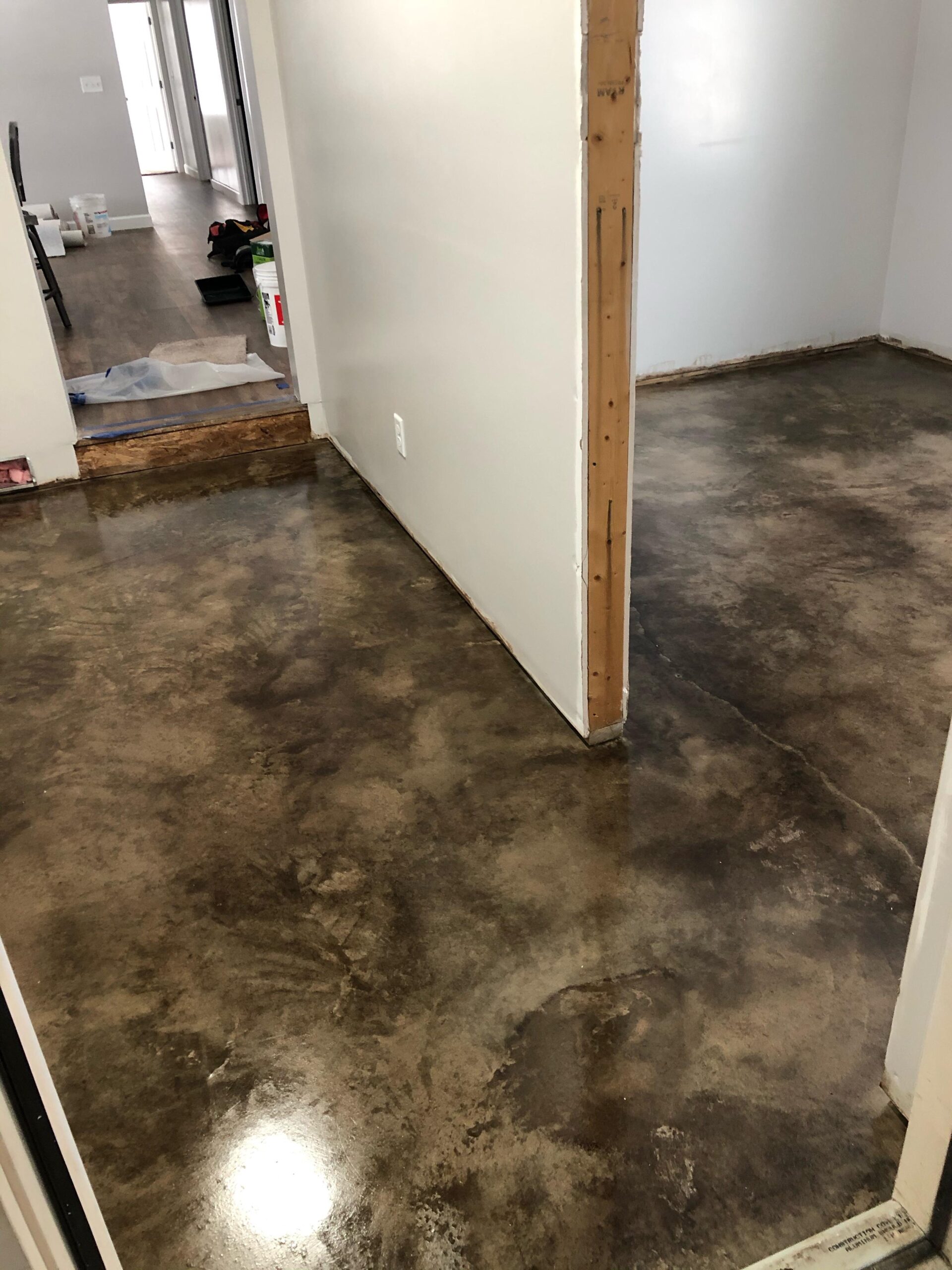The aroma of freshly stained floors is undeniably inviting, promising a fresh start and a beautiful new look for your home. But as the scent lingers, a nagging question arises: can you safely sleep in your house after staining? The answer, like most things in the world of DIY, is a bit more complex than a simple yes or no. It depends on a multitude of factors, from the type of stain used to the ventilation in your home. Let’s dive into the details and learn how to navigate this potentially tricky situation.

Image: phenergandm.com
Imagine this: you’ve spent a long weekend transforming your tired old floors into a glossy, vibrant masterpiece. The final coat is dry, the air smells heavenly, and you can’t wait to sink your toes into the newly finished surface. But your excitement is tempered by a twinge of concern: is it safe to sleep in your house with the faint scent of stain still lingering? We’ll explore the potential risks, answer your burning questions, and equip you with practical tips for a safe and comfortable return to your home after a staining project.
Understanding the Potential Risks:
The biggest worry associated with sleeping in a freshly stained house is the potential for harmful fumes. Floor stains, especially those containing oil-based solvents, can release volatile organic compounds (VOCs) into the air. These VOCs can cause a range of symptoms, from headaches and nausea to dizziness and respiratory irritation. The severity of these symptoms depends on the type of stain used, the concentration of VOCs in the air, and your personal sensitivity.
Factors to Consider:
- Type of Stain: Oil-based stains generally release more VOCs than water-based stains. Look for the term “low VOC” or “no VOC” on the product label.
- Ventilation: Proper ventilation is crucial for dissipating fumes. Ensure adequate airflow by opening windows and doors, even if it’s cooler outside. Using fans to circulate air is also a good idea.
- Drying Time: The manufacturer’s recommended drying time is crucial. Do not rush the process; allow the stain to dry thoroughly according to the instructions.
- Personal Sensitivity: Some people are more sensitive to VOCs than others. If you have a history of allergies or respiratory issues, be extra cautious.
When is it Safe to Sleep in Your House?
It’s best to err on the side of caution and avoid sleeping in your house until the fumes have completely dissipated. While the exact time varies depending on the stain and ventilation, it’s generally recommended to wait at least 24 hours after the final coat dries.
Here are some indicators that your home is ready for sleep:
- No Strong Scent: The lingering smell of the stain should be faint or non-existent.
- No Irritation: You shouldn’t experience symptoms like headaches, dizziness, or nausea.
- Clear Air: The air should look and feel clear, with no noticeable haze or fog.
Safe Alternatives to Sleeping at Home:
If you’re unsure about sleeping in your newly stained house, consider alternative arrangements until the fumes dissipate:
- Stay with Friends or Family: Spending a night or two at a family member or friend’s home might be the easiest option.
- Book a Hotel: If you need a longer stay, consider booking a hotel room for a few nights.
- Sleep on a Sofa or Guest Room: If your house is large enough, you can sleep in a room that wasn’t affected by staining.

Image: eatitandsayyum.com
Tips for Safe Staining and Sleeping:
- Choose Low-VOC Stains: Opt for water-based stains or oil-based stains labeled “low VOC” to minimize fume levels.
- Ventilate Well: Open windows and doors for a minimum of 24 hours after staining, even during cooler weather.
- Use Exhaust Fans: Run exhaust fans in your kitchen and bathrooms to create better air circulation.
- Consider a Portable Air Purifier: A portable air purifier specifically designed for VOC removal can further improve air quality.
- Clear Out Children and Pets: Children and pets are more susceptible to the effects of VOCs. Keep them out of the house until the fumes have dissipated.
- Monitor for Symptoms: Pay attention to your body and those of others in your household. If you experience any symptoms, exit the house immediately.
Expert Insights and Actionable Tips:
From an Interior Designer: “A fresh coat of stain can dramatically transform a space, but it’s essential to prioritize safety and ensure proper air circulation. Never sacrifice your health for a beautiful finish. If you’re unsure, consult a professional contractor for expert guidance.”
From a Respiratory Therapist: “Exposure to VOCs can be particularly harmful for people with existing respiratory conditions. If you experience any respiratory problems after staining, seek medical advice.”
Can You Sleep In House After Staining Floors
Conclusion:
Sleeping in your house after staining floors is a decision that requires careful consideration and a balance between your desire to enjoy your newly transformed home and the need to protect your health. While a brief stay elsewhere might be the safest choice, following the tips discussed above can significantly reduce your risk. By making informed decisions and prioritizing safety, you can enjoy the beauty of your newly stained floors without compromising your health or that of your loved ones. Remember, a little patience goes a long way when it comes to creating a healthy and happy home environment.






